Pictures of Palm Trees to Draw
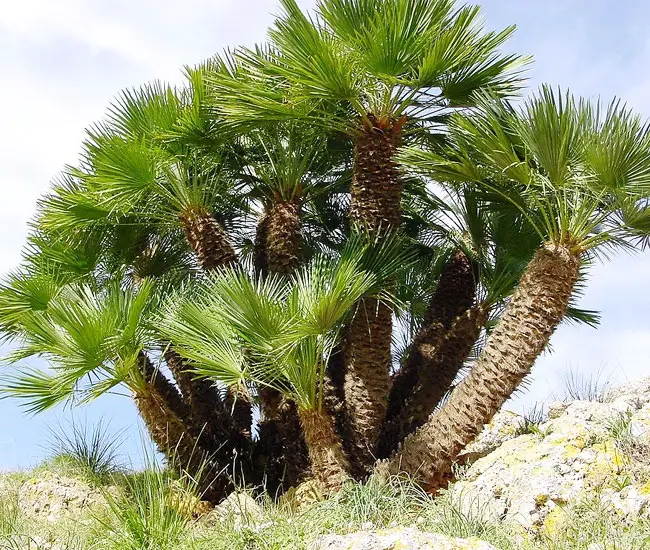
Palms are among the best known and extensively cultivated plant families. There are around 202 currently known genera and over 2,500 different palm tree species in the world, most of which are restricted to tropical, subtropical, and warm temperate climates.
While palms preform best in warm climates, some can tolerate cold temperatures down to 10F. They also differ in growth rate and heights. You can find palms with single trunk, clump of multiple trunks or vining growth habit.
Their leaves can vary in shape and color. Because of such variations, it's easier to classify palms by their appearance and botanical features.
What Are The Different Types Of Palm Trees
Palm trees can be separated into few major types depending on their trunk, leaf structure, growth rate, size, and cold tolerance. Aside from these basic segregations, palms also differ in drought and salt tolerance, fruit and flower production.
If you are trying to identify a palm tree, you should check out my article on palm tree identification where I go into more details about palm tree frond structure, type of trunks and other characteristics.
In this post, I want to list the most popular types of palm trees that gardeners ask for when coming to the nursery. I broke them into 7 main categories with top 5 most popular palms in each.
Top 7 Categories of Palm Trees
- Small Palm Trees – Also known as Dwarf Palms or Miniature Palms, these palms don't get taller than 20ft. Since they are usually slow growing, we don't need to have a separate category for that.
- Fast Growing Palm Trees – These palms grow faster comparing to other palm species. Some of them can grow at the rate of 2.5 feet per year.
- Cold Tolerant Palm Trees – Also known as Cold Hardy Palms, these palms can tolerate cold temperatures down to 5-20F and can survive in USDA Zone 8 and even 7b.
- Fruit Producing Palm Trees – These palms produce tasty fruits that can be used in cooked or raw form.
- High Drought Tolerant Palms – Some palms can survive drought much better that others. These palms are usually very durable and very adaptable.
- Highly Salt Tolerant Palms – These palms are highly resistant to salt spray and can be used along the coast.
- Indoor Palms – Most small palms make a great container plant. Especially those that adapt to wide range of soils and don't mind low humidity.
Small Palm Trees
Palm trees growth rate and size vary. Small Palm Trees, also called Dwarf Palm Trees or Miniature Palms, usually grow at a slow rate and stay under 20 feet. They are perfect for small landscapes and can be used as a focal point or under larger trees. Here is top 5 most popular small palm trees:
1. European Fan Palm (Chamaerops humilis)
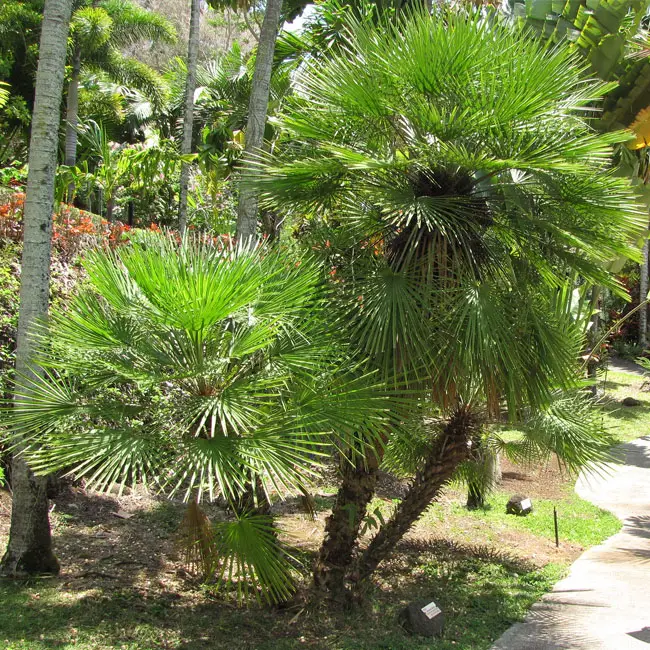
European Fan Palm, also known as Mediterranean Fan Palm, is a small palm tree that typically grows only up to 10ft. tall. It forms multiple trunks with semicircular leaves that range in color from olive to blue-green to silvery blue.
Native to the Mediterranean region, it's highly adaptable to different types of soil and is very low maintenance once well-established. It also has high drought tolerance and can tolerate low temperatures down to 10F.
2. Bottle Palm (Hyophorbe lagenicaulis)
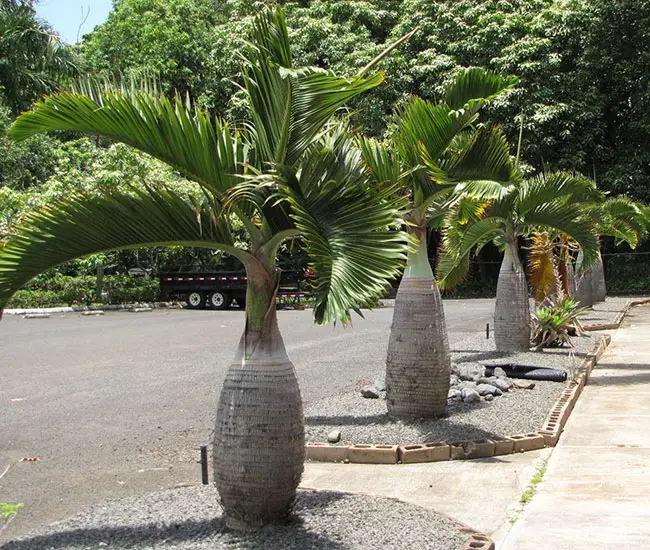
Native to Mascarene Islands, this palm gets its common name from the shape of its trunk that looks like a rounded bottle. It slowly grows up to 12ft. tall. The grey swollen trunk is topped with elegantly arched glossy dark leaves.
While Bottle Palm thrives in full sun and is very salt tolerant, it gets easily damaged by freezing temperatures. This palm is often used as a focal point because of its unusual shape.
3. Lipstick Palm (Cyrtostachys renda)
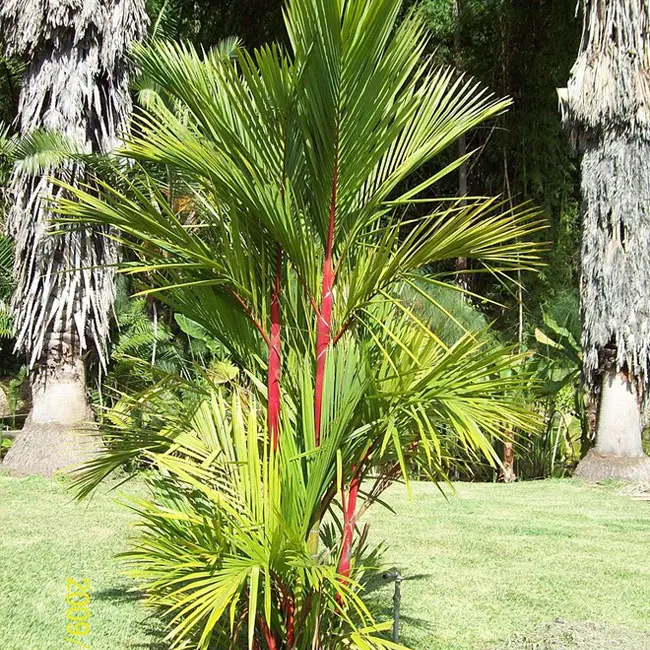
Lipstick Palm, also known as Sealing Wax Palm, is native to Southeast Asia. It gets its common name from the long bight red crownshaft that extends up through the leaf stem and resembles a tube of lipstick. The 4 foot-long leaves are bright green on top and a lighter green underneath.
This palm typically grows up to 15ft. tall. It's widely adaptable and generally is problem free. Great for screen or hedge use.
4. Pindo Palm (Butia capitata)
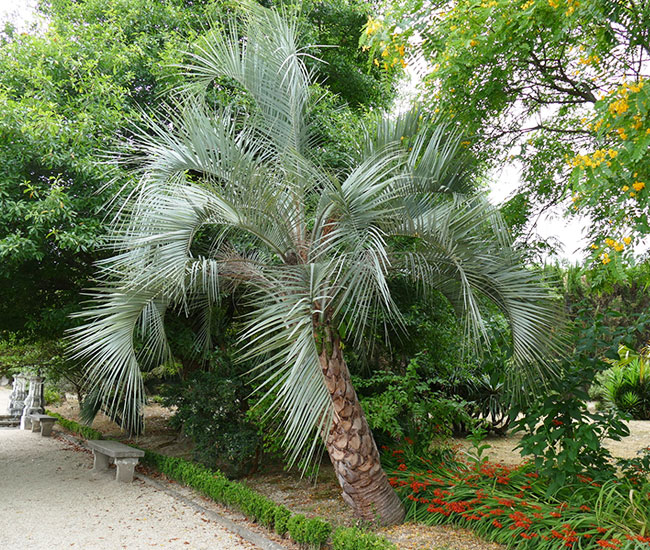
Native to Brazil, this palm is also known as Jelly Palm due to its sweet fruits that taste like jelly. While this is one of the most cold tolerant palms that can tolerate cold down to 10 F, it performs best in the USDA Zone 10B.
The arching blue-green leaves top 18 inches thick trunk that is covered with old leaf bases. The Pindo Palm is widely adaptable and is very drought tolerant. Perfect as a focal point. It slowly grows up to 15ft. tall.
5. Pygmy Date Palm (Phoenix roebelenii)
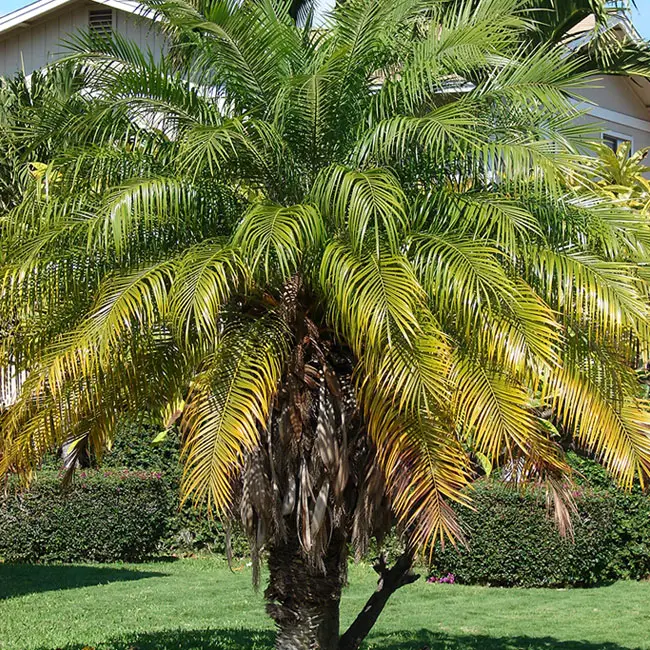
Pygmy Date Palm is a very versatile tree because of its compact size. Weather as a small focal point or surrounded by other foliage plants, it makes a delightful composition.
It slowly grows up to 10 ft tall developing a lush crown of shiny dark green leaves with sharp spines along the stems. This palm likes regular watering and full sun. It can tolerate cold only down to 30 F.
Fast Growing Palm Trees
Many gardeners want to buy a fast growing palm tree to save money and to create the landscape style they want much faster. There are many palms that will quickly grow developing large overhead canopy that provide shade and protection from hot sun.
Keep in mind, the growth rate highly depends on the growing environment like soil type, number of warm days, humidity level, and moister levels. Palms in Florida will grow much after than in California. Here are top 5 fast growing palms:
1. Carpentaria Palm (Carpentaria acuminata)
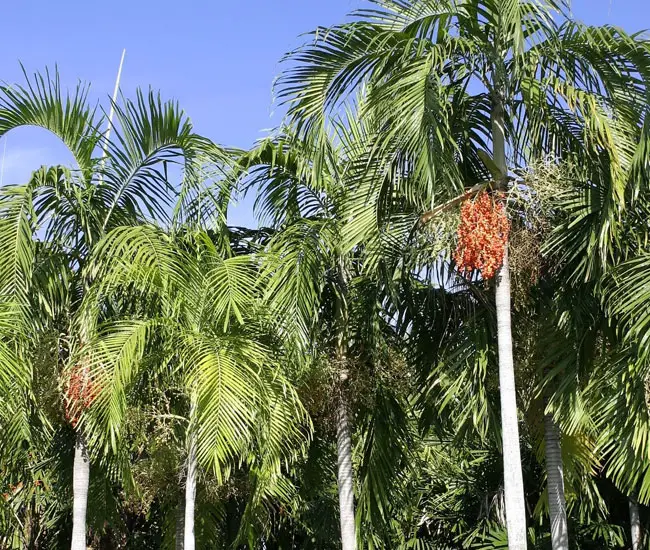
This native to Australia palm has a smooth single trunk topped with beautiful crown of gracefully arching fronds. It can quickly grow up to 30-40 ft. tall. In great conditions it grows at about 3 ft a year. Carpentaria Palm is very sensitive to cold and not drought tolerant at all.
2. Foxtail Palm (Wodyetia bifurcata)
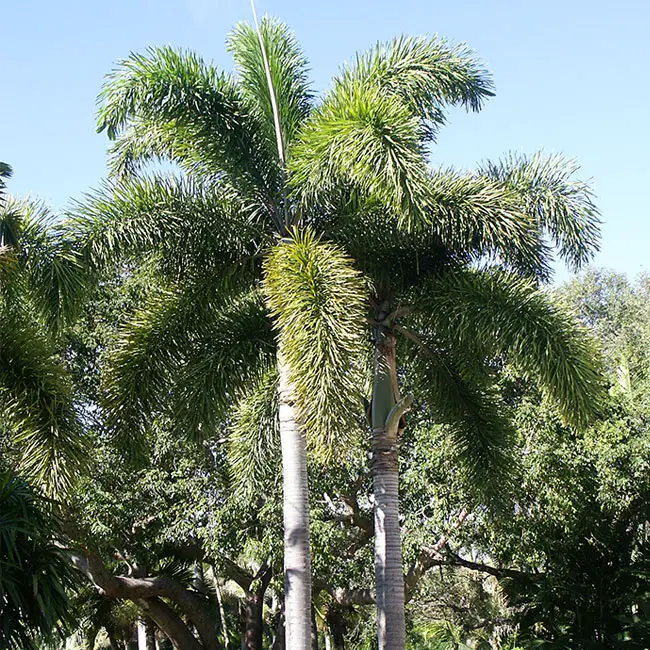
Native to Northern Australia, Foxtail Palm has become more and more popular each year. It's a very fast-growing palm that can quickly get to 20ft. with a maximum height of 30 ft. It's adaptable to broad range of soils, likes full sun and can tolerate a bit of cold weather.
3. Majesty Palm Tree (Ravenea rivularis)
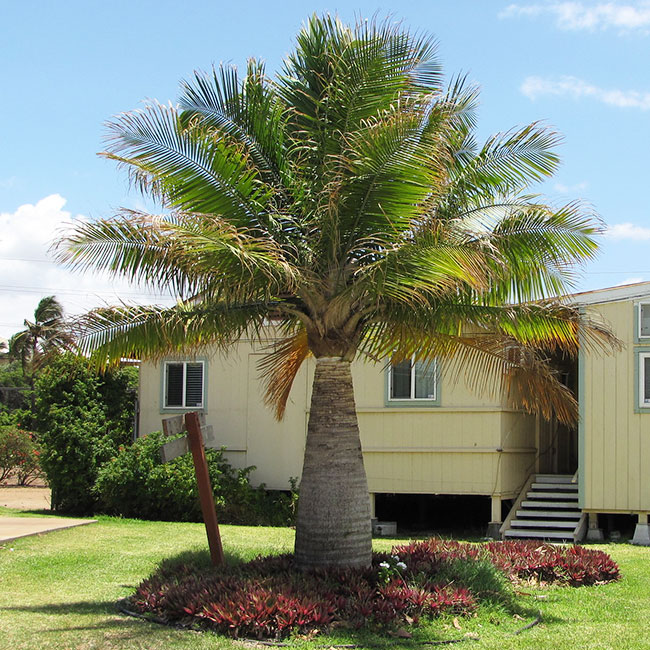
This fast growing palm can quickly reach 10 ft in 10 years growing at about 1ft.per year, at which point growth slows considerably.
It's maximum height is about 35 ft., but typically it doesn't get higher than 20ft. Majesty Palm likes moderate shade with frequent fertilization.
4. Mexican Fan Palm (Washingtonia robusta)
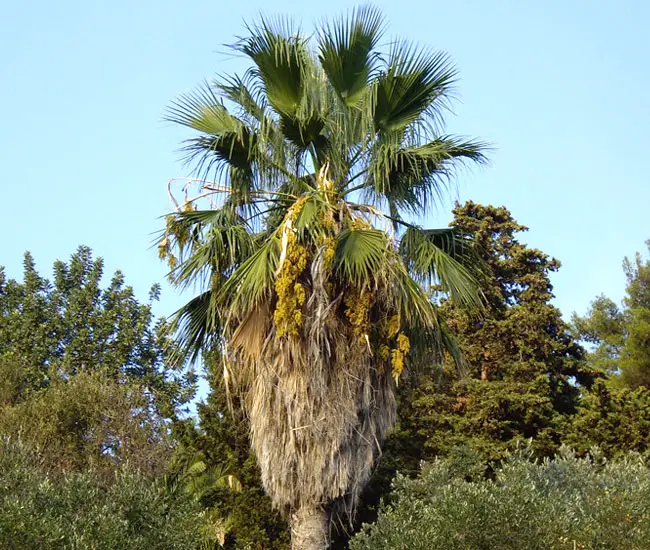
The Mexican Fan Palm, also known as Washington Palm and Skyduster, is a fast growing palm that is native to Mexico. In the right conditions it can grow at a rate of about 2ft. per year to its maximum height of around 70 ft.
It's very adaptable to different type of soils, very drought tolerant and can tolerate cold temperatures down to 20F.
5. Queen Palm (Syagrus romanzoffiana)
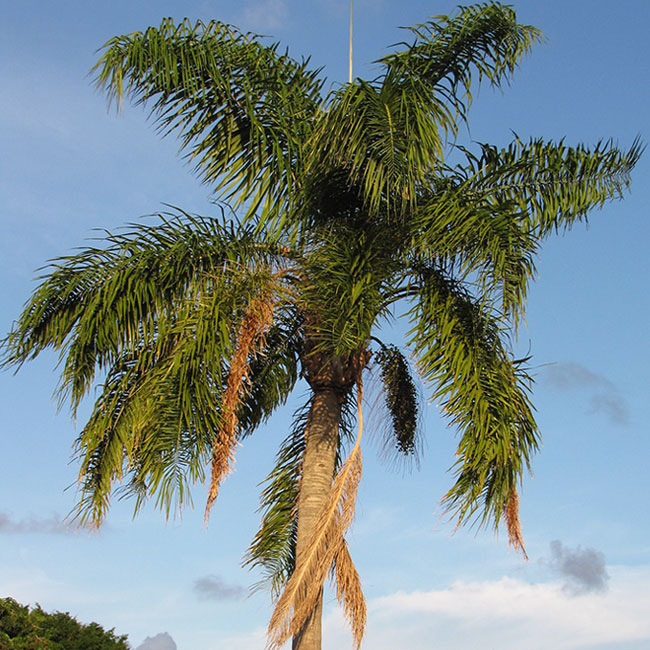
Queen Palm is also known as Cocos Plumosa, and Jeriva Syagrus romanzoffiana is a very popular fast growing palm that can grow from 15 gallon plant to25 ft. in 7 years with a growing rate of 3.5 ft. per year. This palm likes full sun and is rarely bothered by pests or diseases.
Cold Tolerant Palm Trees
Most palms like warm weather, but there are some palms that can tolerate low temperatures down to 10 – 15F so you can grow them in Zone 8. There are also northern palm trees, also called cold hardy palms, that can survive even lower temperatures but they have to be well established.
Of course I always recommend providing cold weather protection in case cold temperatures last more than one night. Here is a list of 5 most popular cold hardy palm trees.
1. Bismarck Palm (Bismarckia nobilis)
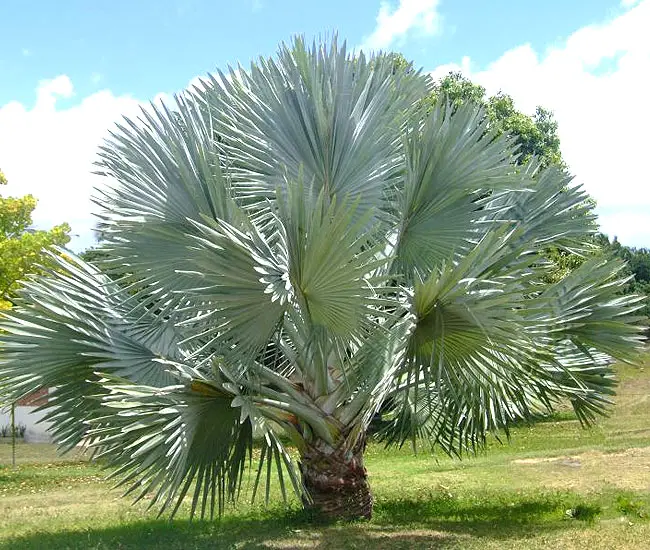
The Bismarck Palm is also known as Bismark Palm, Bismarckia Palm, Nobilis Palm, is one of the most beautiful and desireable fan palms.
It is widely adaptable, drought tolerant and can tolerate cold down to 15F when mature enough. Great for zones 8b (15 to 20 F) – 11 (above 40 F).
2. California Fan Palm (Washingtonia filifera)
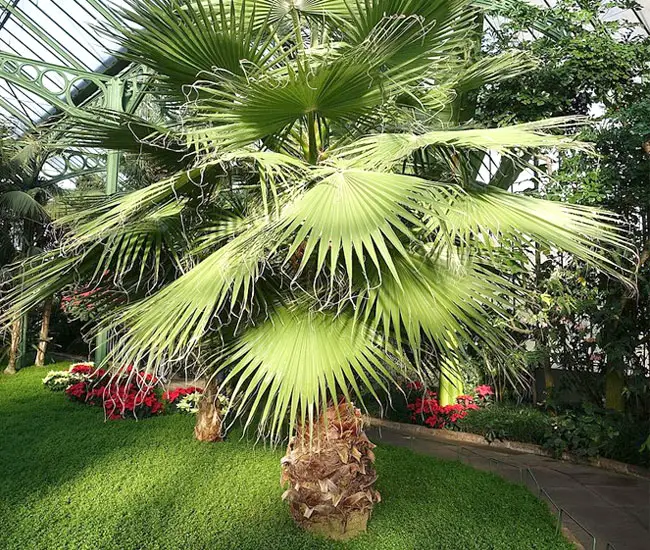
The California Fan Palm, also known as Desert Fan Palm, American Cotton palm, Arizona Fan Palm, can tolerate cold down to 15F when mature enough. This is a great palm for USDA Zone 8b (15 to 20 F) – 11 (above 40 F). It's not only cold tolerant, but also is drought tolerant and widely adaptable.
3. Chinese Fan Palm (Livistona chinensis)
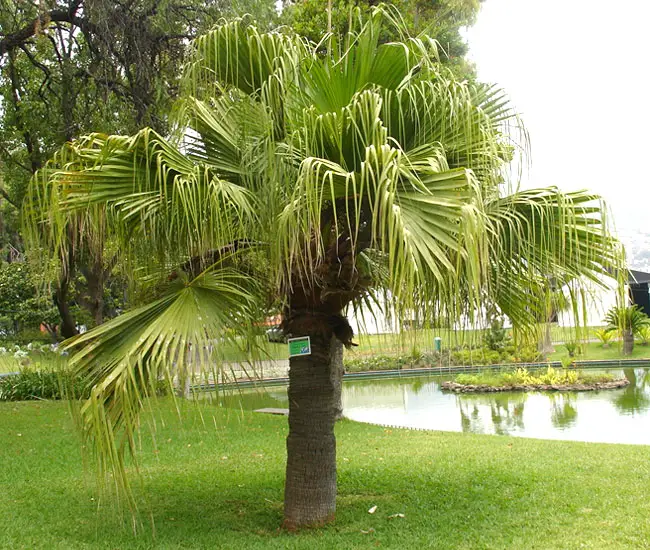
The Chinese Fan Palm, also known as Chinese Fountain Palm and Fountain Palm, can tolerate cold down to 15F making it perfect for USDA Zone 8b (15 to 20 F) – 11 (above 40 F). It's also very drought tolerant and can adapt to wide rage of soils.
4. Needle Palm (Rhapidophyllum hystrix)
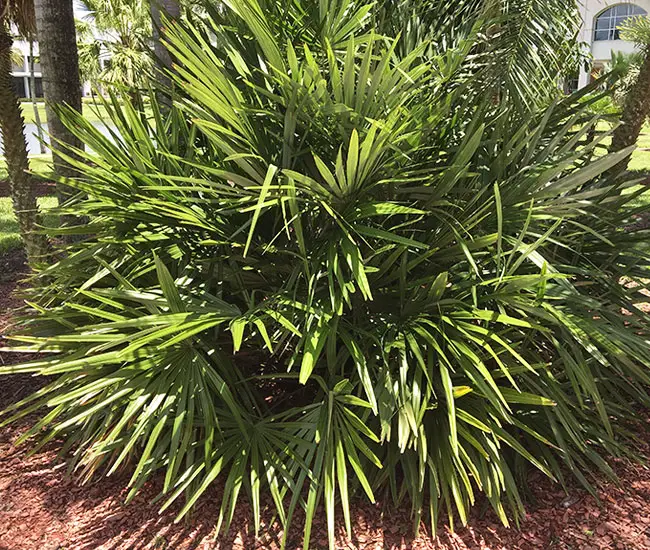
This shrubby looking palm, also known as Porcupine Palm, can tolerate cold temperatures down to 10F and even lower when well established.
It's great for landscape in USDA zones 7b (5 to 10) – 11(above 40 F). It also has high drought tolerance and adapts to broad range of soils.
5. Windmill Palm (Trachycarpus fortune)
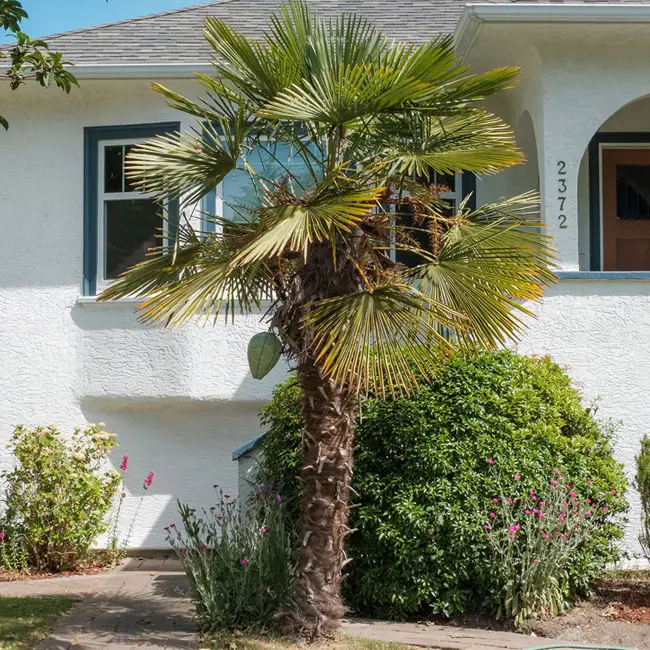
Windmill Palm, also known asChusan Palm and Chinese Windmill Palm, is one of the hardiest palms in cultivation, capable of withstanding freezing temperatures down to 5F with no damage.
It's a great palm for USDA zones 7b (5 to 10) – 10b (35-40). Surprisingly, this China native palm does not like hot tropical climates.
Fruit Producing Palm Trees
It's always nice to have a palm tree that not only gives your landscape a tropical look, but also provides yummy fruits. Here are top 5 palms that are known for their fruits:
1. Acai Palm (Euterpe oleracea)
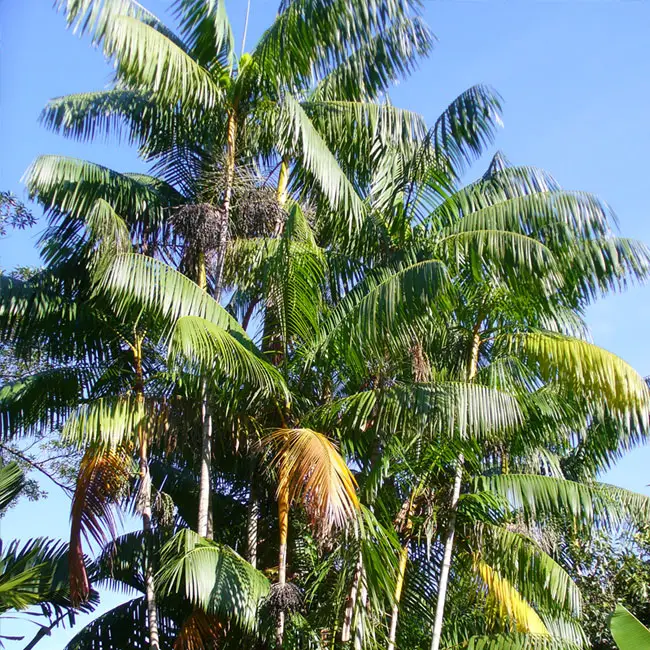
This graceful palm is known of its edible tasty fruits that are packed full of antioxidants, amino acids and essential omegas. These fruits are used in energy drinks, weight loss products, and lowering cholesterol products.
It's not drought tolerate and does not do well in cold weather. It's perfect for USDA Zones 10a (30 to 35 F) to 11 (above 40 F).
2. Coconut Palm (Cocos nucifera)
This most economically important palm, is widely known of its fruit called 'coconut', that is filled with a layer of white coconut "meat" and sweet watery milk.
Coconut Palm bares fruits all year long with an annual production around 50-200 coconuts per palm tree. The coconut is also used for oil production and the fiber from the fruit husk is used in manufacturing.
3. Date Palm (Phoenix dactylifera)
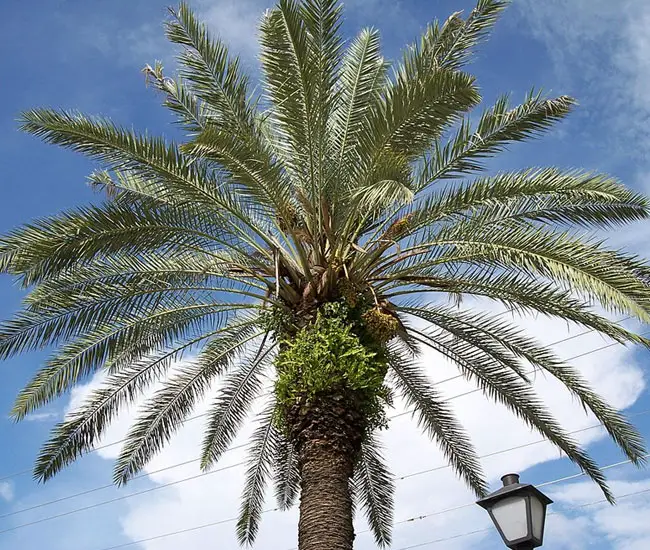
The True Date Palm, also known asDate Palm, True Date, Medjool Palm, Medjool Date Palm, Phoenix Medjool Palm, Jewel Palm, Medjewel Palm, and Medjool Dates, produces edible orange-red fruits, called 'dates'.
Dates are naturally very sweet tasting like a a cross between a fig and a prune. They are also used to produce ice-creams, syrups, alcohol drinks, syrups, vinegars and alcohol drinks.
4. Jelly Palm (Butia capitata)

The Pindo Palm, also known as Jelly Palm and Wine Palm, is the hardiest feather-leafed palm used in cultivation. The unique feature of this palm is its orange fruits that has sweet pineapple/banana like flavor. They make very tasty jelly thus it's common name Jelly Palm.
5. Saw Palmetto Palm (Serenoa repens)
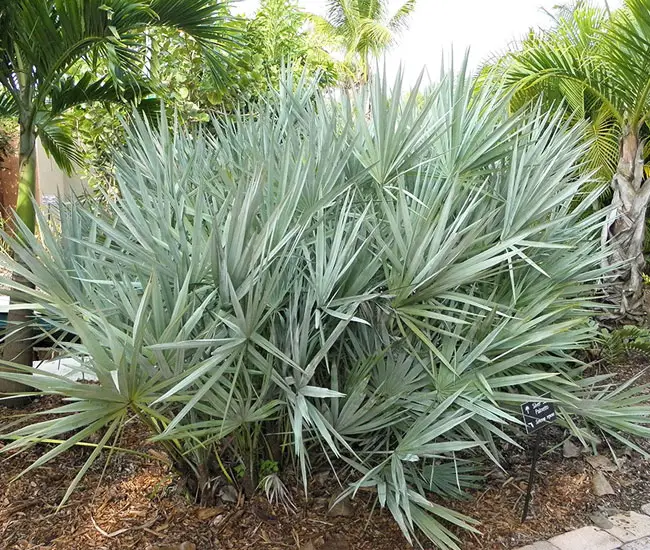
This cold hardy palm, also known as Silver Saw Palmetto Palm and Scrub Palm, produced black-blue berries that are used to make medicine for kidney, prostate urinary problems. It also produces yellow-white, fragrant flowers that are used to make honey.
High Drought Tolerant Palms
Since palm trees come from different climate zones, they have also different tolerance to drought. While all palms need moister, some can survive longer in dry soil. Those native to desert environment have the highest drought tolerance.
Of course it depends on the few factors like age of the palm, humidity levels, sun exposure and wind conditions.
Newly planted palms need frequent watering and are less likely to survive a drought even if they are drought tolerant. Here is top 5 drought tolerant palms:
1. Areca Palm (Chrysalidocarpus lutescens)
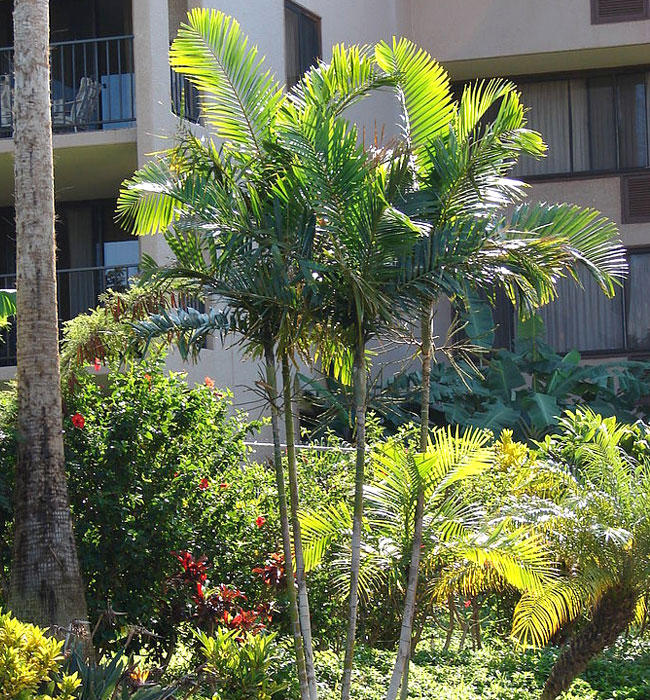
The Areca Palm, also known as Butterfly Palm, Cane Palm, Madagascar Palm, Golden Feather Palm, and Yellow Palm, is widely popular throughout subtropical and tropical climates. Native to islands of Madagascar, it's very drought tolerant and adapts to wide range of soils.
2. Blue Hesper Palm (Brahea armata)
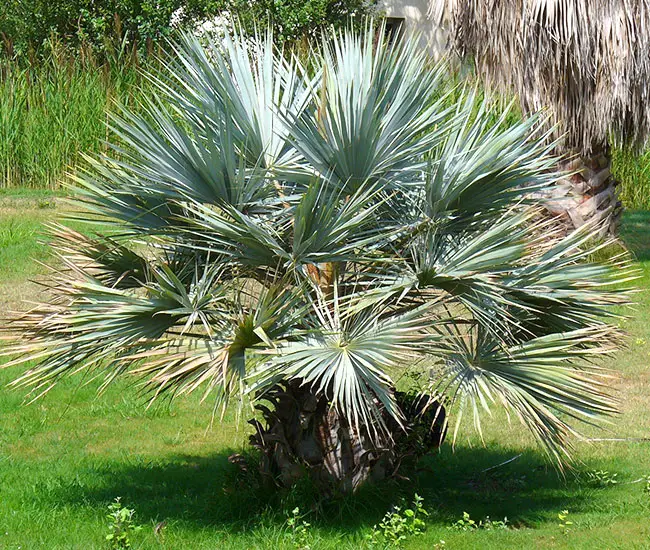
The Blue Hesper Palm, also known as Mexican Blue Palm, Blue Palm, Sweet Brahea Palm, and Gray Goddess is known for its dramatic canopy of ice-blue leaves. Native to Mexico, this palm is drought tolerant and likes alkaline type of soil. Great for USDA Zone 9b – 11.
3. Blue Latan Palm (Latania loddigesii)
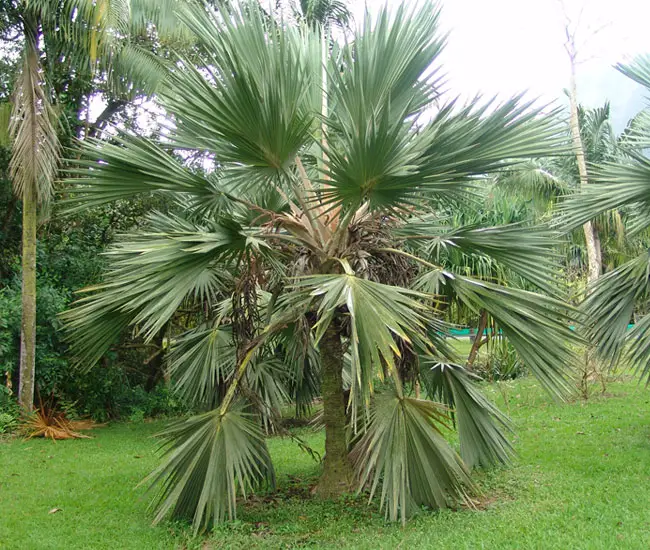
The Blue Latan Palm, also known as Blue Latan, Blue Latania Palm, is a striking looking palm due to its specific coloration. The color fades as the palm age.
Native to Mauritius Island, it's very drought tolerant and adapts to broad range of soils.
4. Canary Island Date Palm (Phoenix canariensis)
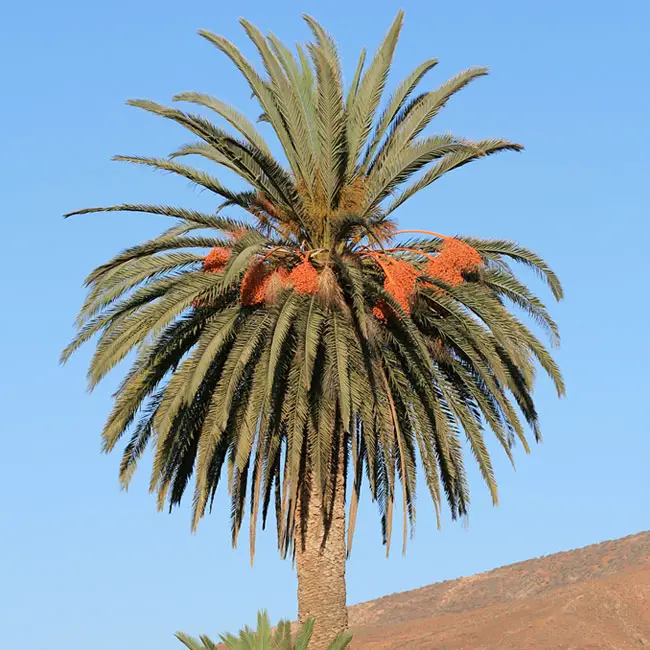
This hardy palm, also known as Canary Island Date Palm, Canary Palm, Pineapple Palm, and Canary Island Palm, is extremely tough and durable.
Native to Canary Islands and North Africa, it can tolerate drought, poor soil conditions, and low temperatures down to 15F. Great for USDA Zones 8b (15 to 20 F) to 11 (above 40 F).
5. Sylvester Date Palm (Phoenix sylvestris)
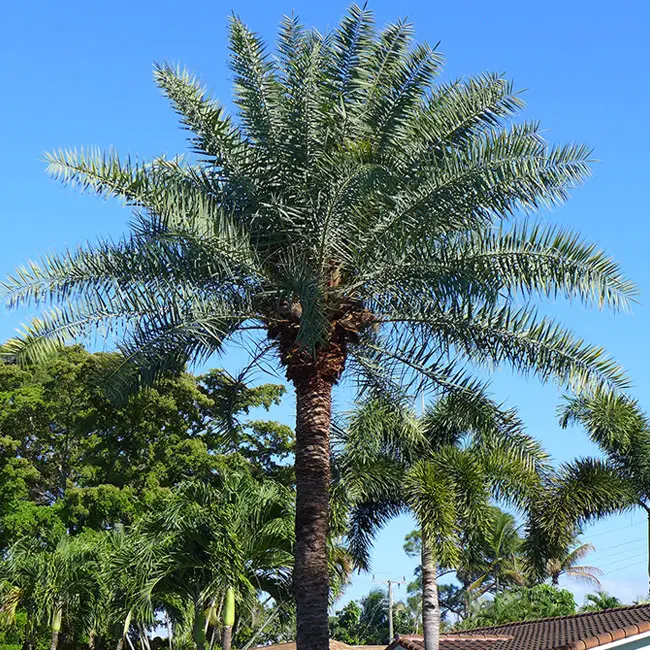
The Sylvester Date Palm, known as Sugar Date Palm, India Date Palm, Silver Date Palm, and Wild Date Palm, is very similar to Phoenix canariensis but does not sucker and bears shorter leaves.
Native to India, it's a very durable palm that can adapt to wide varieties of soil, tolerates cold down to 15F and can tolerate drought.
Highly Salt Tolerant Palms
Palms that grow on coastal lands are highly salt-tolerant and could be used in your landscape if you live close to the water. Here is my list of top 5 salt tolerant palms:
1. Buccaneer Palm (Pseudophoenix sargentii)
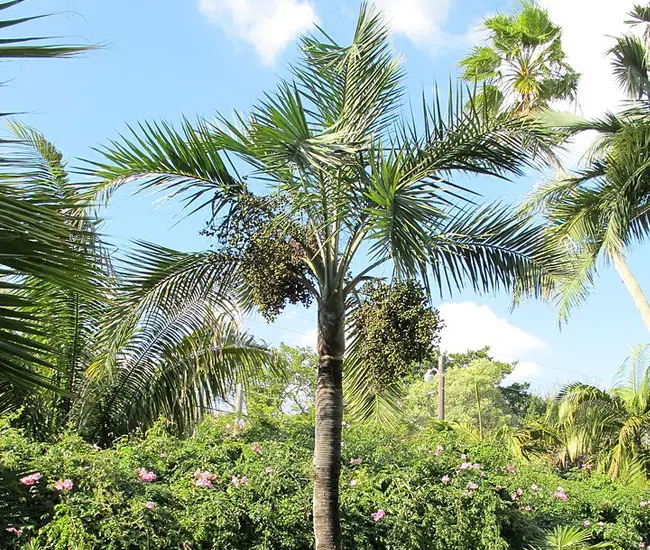
The Buccaneer Palm, also known as Cherry Palm, Sargent's Cherry Palm, Palma de Guinea, is one of the most durable palms in Florida. It's generally problem free and is very drought and salt tolerant. Great for USDA Zone 10b-11.
2.Cabbage Palm (Sabal palmetto)
Cabbage Palm, also known as Sabal palm, is one of the most popular and widely used palm trees in United States. It became so popular because if of it's durablity.
It's not only widely adaptable, but is also salt tolerant, drought tolerant and cold tolerant. It can withstand cold temperatures down to 10F making it one of the most cold tolerant palms.
3. Old Man Palm (Coccothrinax crinita)
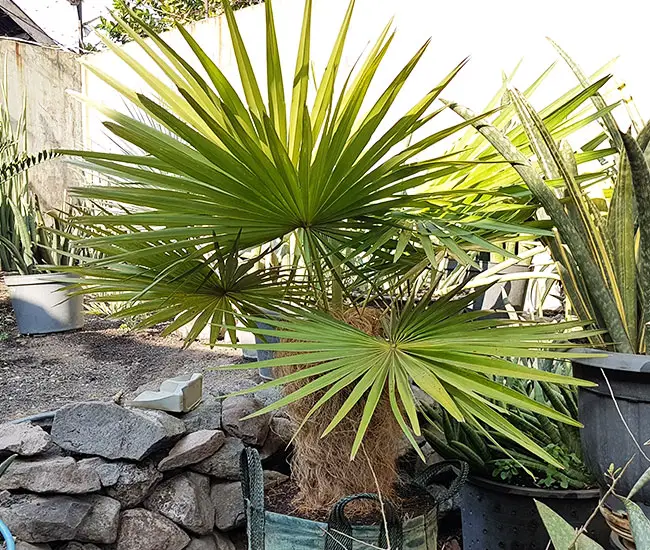
This is a delightful fan palm remarkable for the long shag of hair around the trunk. While it's not very drought tolerant, it adapts well to alkaline soils and is very salt tolerant. Great for USDA Zone 10b – 11.
4. Saw Palmetto Palm (Serenoa repens)
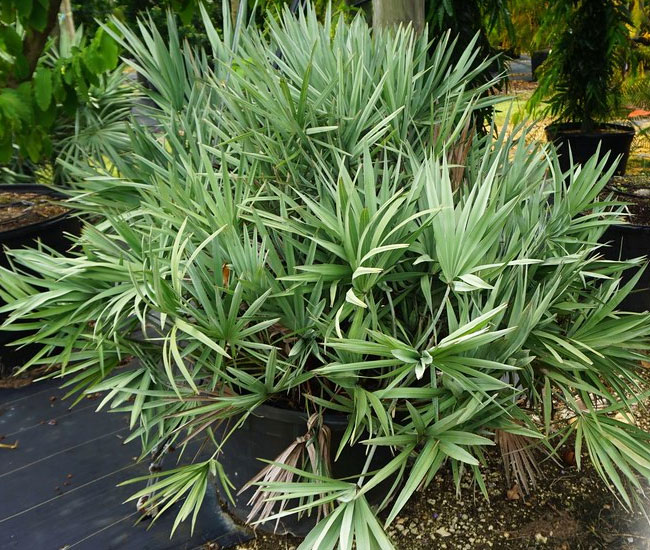
This super durable palm can be listed in every category because it's cold tolerant, drought tolerant, salt tolerant, small (only 3-6ft), and produces edible fruits.
This palm also known as Silver Saw Palmetto Palm and Scrub Palm, is known to survive in the 10F temperatures and even lower.
It's a bushy slow growing palm that can adapt to wide range of soils and is perfect as a container palm.
5. Spindle Palm (Hyophorbe verschaffeltii)
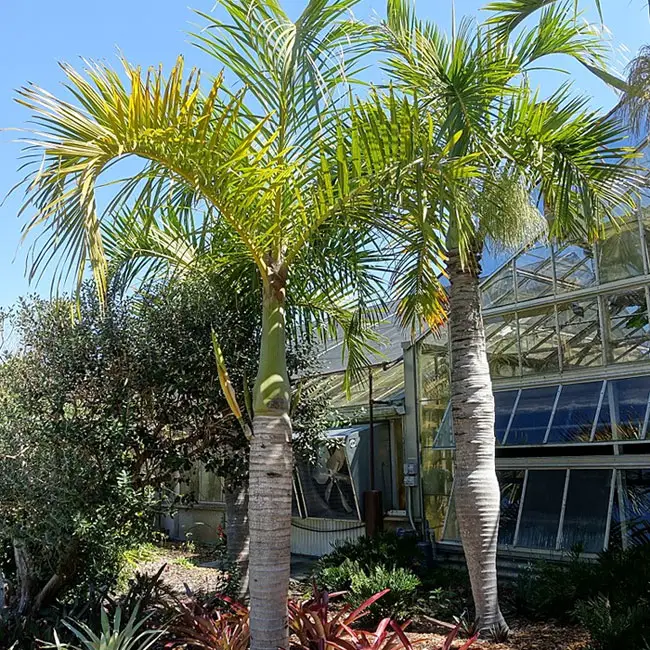
Spindle Palm looks very similar to Bottle Palm because of it's swollen trunk, but is a little hardier and grows slightly taller. It likes full sun, easily adapts to wide range of conditions and is salt tolerant. Perfect for USDA Zone 10b – 11.
Indoor Palms
Palm trees not only create a tropical look, but can also purify the air when growing at home. While you can grow a lot of the palm trees indoor where there is low light and low humidify levels, some can tolerate indoor conditions better than others.
Slow growing palms that adapt to a wide range of soils, do the best indoors. When buying an indoor palm, always consider it's mature size potential. Here are 5 the most popular indoor palm trees:
1. Areca Palm (Chrysalidocarpus lutescens)
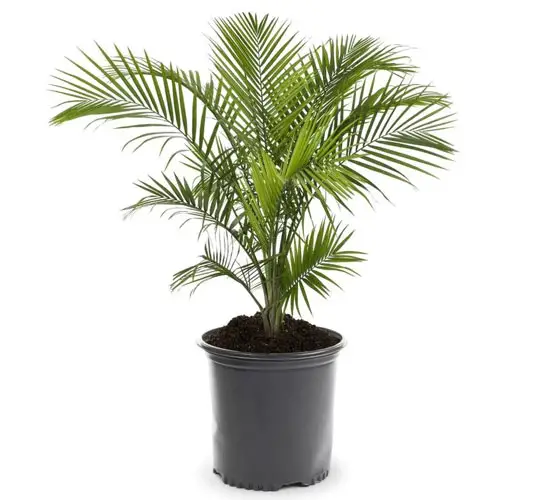
Areca Palm is probably one of the most popular indoor plams. It has long, light green fronds that are feather-shaped with narrow leaflets.
Areca Palm grows around 7 inches a year. It will grow to around 7 feet tall indoors. It likes a lot of indirect light, requires a lot of water and well-drained soil.
2. Bamboo Palm (Chamaedorea seifrizii)
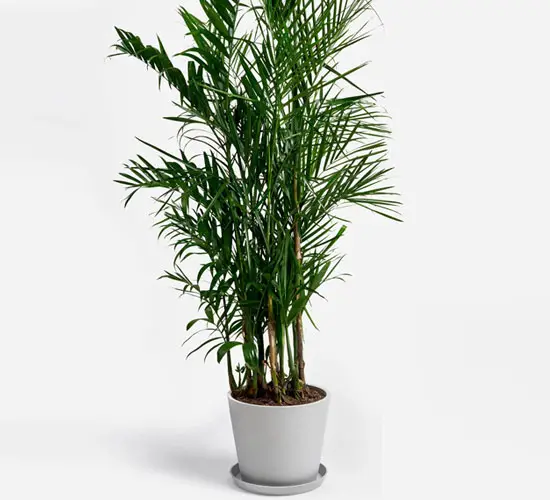
Bamboo Palm, also known as Reed Palm, Clustered Parlor Palm, and Cane Palm, makes a great indoor plant due to it's ability to tolerate low lights, low humidity and poor soil. Indoors it will grow to about 10 feet tall and 4 to 5 feet wide.
3. Kentia Palm (Howea forsteriana)
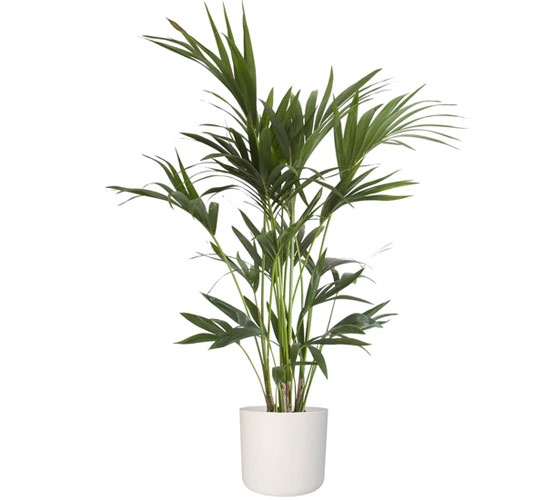
This Australia native, is another popular choice for an indoor palm. It has graceful feather-shaped fronds and a clustering type of trunk.
Very tolerable to low lights, it will grow to about 7ft. indoors. In low light Kentia Palm may only hold 4-6 fronds, while in medium light levels it will produce twice as many fronds.
4. Ponytail Palm (Beaucarnea recurvata)
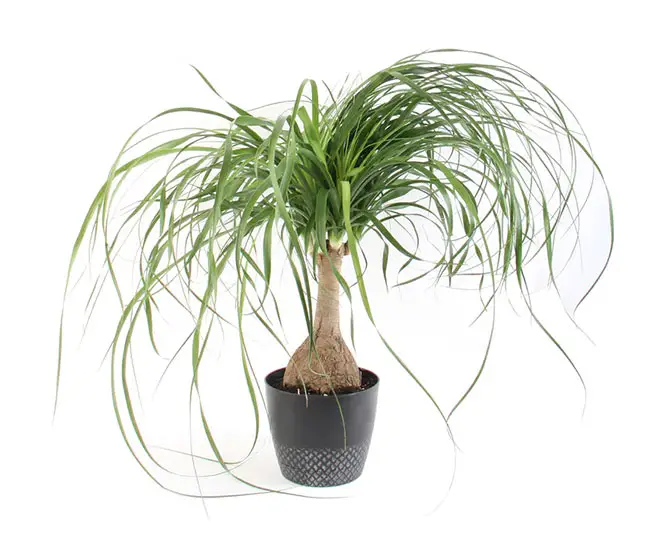
One of the easiest and forgiving indoor palms is Ponytail Palm. It has long, hair-like, curly leaves that cascade down from a single smooth trunk, hence the name Ponytail Palm. Also known as Pony Tail Palm, Elephant-Foot Tree, Elephant Foot, Monja, and Palma culona, this palm can tolerate low level lights and will grow up to 6ft. indoors.
5. Sago Palm (Cycas revoluta)
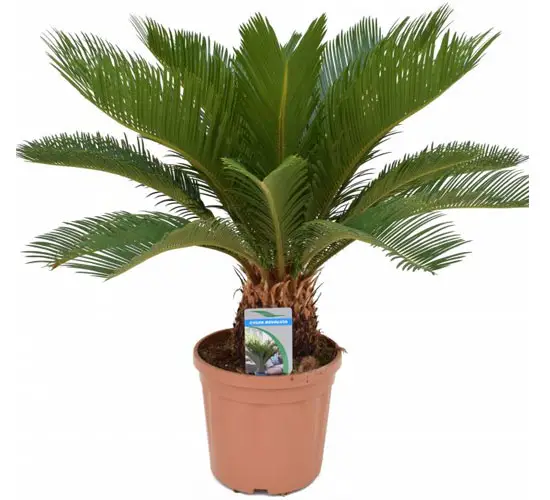
Sago Palm, which is not even a true palm but cycad, is another popular plant. It is called 'palm' due to its similar look. This slow growing, cold tolerant palm can grow to about 5-7ft. indoors.
It takes 70-100 years for the Sago Palm to reach its maximum height. Be careful if you have pets, since this palm is toxic if infested.
To see more popular palms check out our palm tree catalog.
Related articles:
–20 Amazing Palm Tree Landscape Design Ideas (with Pictures)
–What Palm Trees Are Native To United States
–10 Most Popular Fast Growing Palm Trees
–Palm Tree Care 101: Ultimate Guide to Health & Happy Palms
Latest posts:
Source: https://www.florida-palm-trees.com/palm-tree-types/